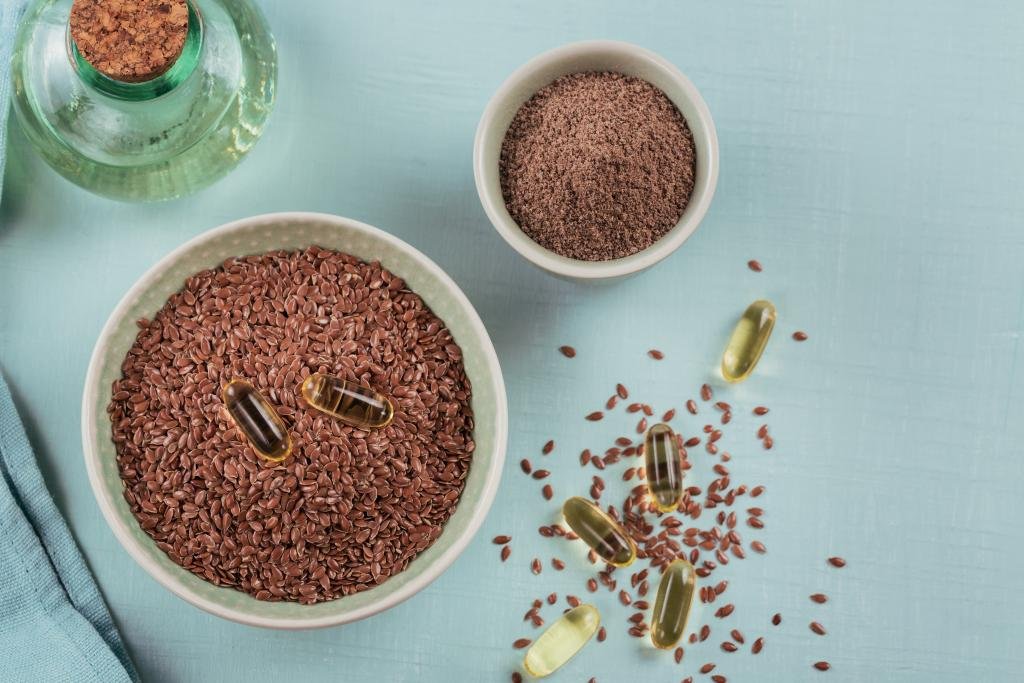Login
Ground flaxseed – How much can we and our companion animals safely eat?

FLAXSEED & CYANIDE Article Summary: https://www.nutraceuticalalliance.ca/post/ground-flaxseed-how-much-can-we-and-our-companion-animals-safely-eat
Scientists have long been aware that crushed/ground flaxseed results in some cyanide production. But we have not focused on this toxin as an issue because the amounts produced do not cause toxic levels of cyanide in people or animals when consumed in the amounts that most people and animals are eating. But as pet food formulators, we should be aware of the limitations in this assumption and carefully evaluate our flaxseed for cyanide toxicity - from its form & method of processing as well as the amount in the recipe.
Cyanide is produced when the hull and seed are crushed together - enzyme w/ cyanide precurser. Cyanide is a toxin that binds to proteins in the mitochondria of all cells, resulting in the inhibition of oxidative phosphorylation, the primary process by which cells generate ATP (cellular energy), and is required for life. Peak plasma concentrations of cyanide occur within 15-30 minutes of ingestion and return to baseline by 2 to 3 hours.
The main concern is with fresh, crushed, or ground flaxseed. Cyanide is not a concern in flax oil which is extracted from the seed or whole flaxseed, which does not form or produce any significant amount of cyanide when digested.
It has previously been suggested that concentrations lower than 0.5 µg / kg bw should not result in any observable toxic effect. But we also know that there is no safe amount of cyanide, i.e. there is no known concentration of cyanide in the body that provides any beneficial effect. We must be careful to avoid over-supplementing with crushed flaxseed that is not treated to avoid cyanide production.
Scientists have developed ways of treating flaxseed to prevent cyanide production. One way is by using steam evaporation to release and remove cyanide without affecting the protein fat and fiber and lignan content of the linseed. (Yamashita et al. 2007) Another method involves a fermentation process that also has the advantage of not causing any environmental pollution and still detoxifies the flaxseed while retaining beneficial nutrients, lignans and fatty acids at the same level as untreated flax. (Wu et al. 2012)
Other methods, such as boiling, roasting, autoclaving, microwaving also decrease cyanide in flax (incompletely) by destroying the enzymes responsible for cyanide production (ß-glycosidase enzymes) in the cell wall of the flaxseed hulls, but these heat processes also lower nutrient value, especially for unsaturated fatty acids.
Practical information:
An animal would need to consume 10 grams of flaxseed/kg BW to reach the lowest LD50 (lethal dose for 50% of the animals in a study) of 0.56 mg cyanide / kg body mass.
An appropriate safe limit should be 10X lower than that: 1 gram of flaxseed/kg BW, (which is 2 x higher than what is considered toxic in a human).
Example:
Serving size of ground flaxseed for a 60 lb dog (27 kg) might be up to 2 Tblsp per day - Tablespoon = 7 grams
2 tablespoons =14g, about 0.5 gram/kgBW/day
(Note 1 tsp flax weighs about 2 grams and a Tblsp weighs about 7 gm)
In horses 1 lb (454 gm) ground flaxseed fed per day is about 10 times lower than the toxic dose.
Pet food makers/manufacturers need to ask flaxseed suppliers for product specification sheets that detail the amount of cyanogenic precursor, state if the product is processed to destroy the cyanide-producing enzymes. If this information is not available, do not purchase the product.
Abraham K, Buhrke T and Lampen A, 2016. Bioavailability of cyanide after consumption of a single meal of foods containing high levels of cyanogenic glycosides: a crossover study in humans. Archives of Toxicology, 90, 559–574.
Barthlet VJ and Bacala R, 2010. Development of optimized extraction methodology for cyanogenic glycosides from flaxseed (Linum usitatissimum). Journal of AOAC International, 93, 478-48.
Wu CF, Xu XM, Huang SH, Deng MC, Feng AJ, Peng J, Yuan JP, Wang JH.An efficient fermentation method for the degradation of cyanogenic glycosides in flaxseed. Food Addit Contam Part A Chem Anal Control Expo Risk Assess. 2012;29(7):1085-91. doi: 10.1080/19440049.2012.680202.
Yamashita T, Sano T, Hashimoto T and Kanzawa K, 2007. Development of a method to remove cyanogenic glycosides from flaxseed meal. International Journal of Food Science and Technology, 42, 70-75.


